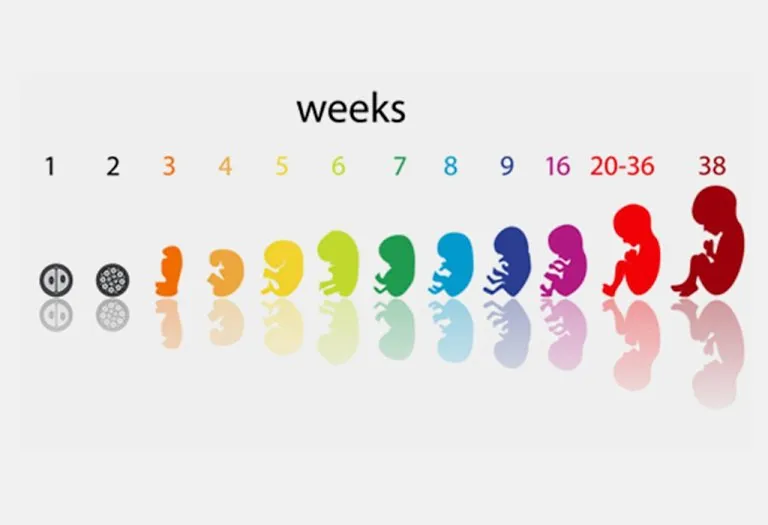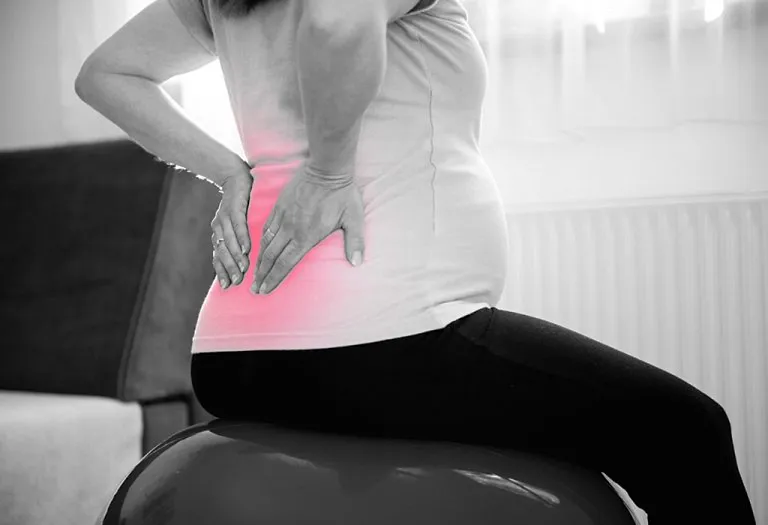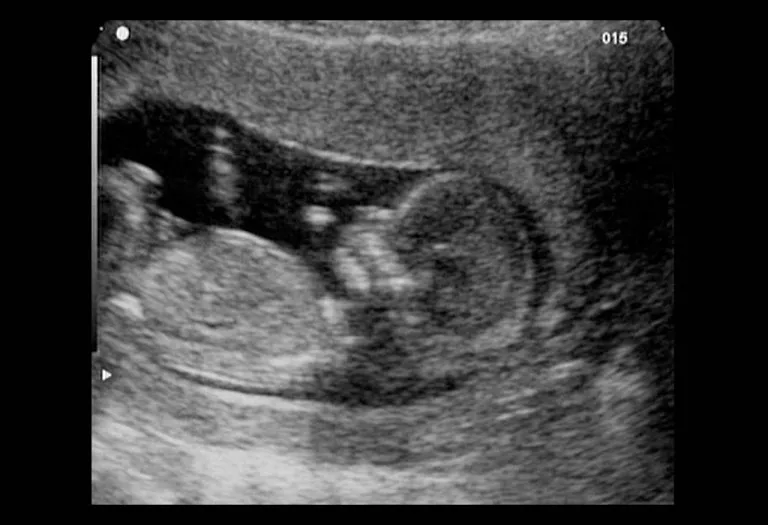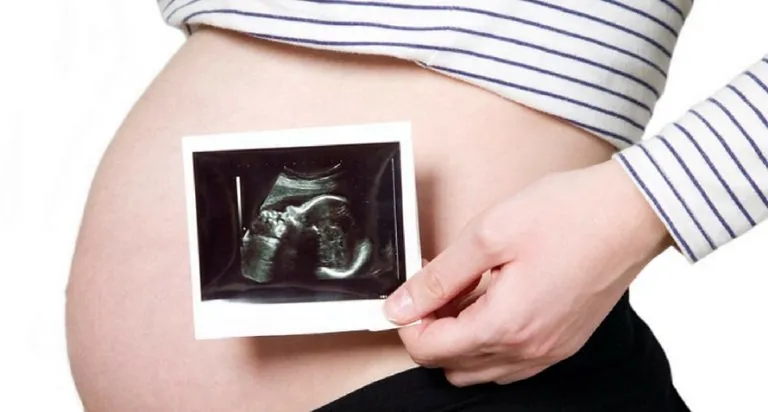Stages of Prenatal Development – The Three Key Phases Explained

- Phases of Prenatal Development
- Prenatal Development Stages Chart
- Common Problems During Prenatal Development
- Risks During the Prenatal Period
- FAQs
For most of us, a child’s growth becomes noticeable only after a few months, when visible changes occur. However, the phases of prenatal development play a crucial role in shaping a child’s future. This period is a vital part of a child’s growth. During pregnancy, the brain and nervous system begin forming, influencing learning abilities and behavior later in life. Proper nutrition, a stress-free environment, and medical care significantly impact prenatal growth. The three main prenatal period stages each contribute uniquely to the baby’s development. By understanding these phases, parents can better support their child’s health from the very beginning. Ultimately, the prenatal phase is just as important as postnatal growth, setting the stage for a lifetime of well-being.
Phases of Prenatal Development
There are 3 stages of prenatal development. These are the most important prenatal stages of human development for a baby (1).
1. Germinal Stage
This is when conception takes place. The sperm of the father and the egg of the mother combine inside a Fallopian tube of the mother to form a zygote (2). It journeys gradually towards the uterus, taking over a week’s time to reach there, and then the process of growth begins. The cells divide by mitosis, and the first steps of the baby’s formation begin.

The cells present in the inner section lead to the formation of the embryo, while the cells in the outer section develop to form the placenta. This division continues and forms a blastocyst, which in itself is made up of three portions.
The cells which develop to form the nervous system and the skin of the baby are termed as ectoderm. The cells which develop to form the respiratory and digestive systems for the baby are called endoderm. The other cells are called mesoderm, and they form the skeletal and muscular systems. This blastocyst then attaches itself to the wall of the uterus (implantation).
A successful implantation interrupts the menstrual cycle in the woman, which will lead her to check if she is pregnant or not.
2. Embryonic Stage
The cells that have grown together until now constitute the embryo. This growth takes place until the entire mass of cells starts to resemble the vague shape of a baby. This is also where the first steps of the brain’s development begin.
The formation of a neural tube takes place first. Multiple ridges start forming along the neural plate, which leads to the creation of a hollow, tube-like structure. This later develops into the spinal cord and the brain. The tube closes, and brain cells start developing inside, forming the foremost, middle, and rear sections of the brain.
The head also begins to form rapidly, as the first signs of facial features start showing themselves. A single blood vessel that later grows to become the heart starts pulsating lightly.
This is then followed by the formation of the limbs, roughly around 5 weeks into pregnancy. By 8 weeks, the embryo has developed most of the basic organs a human being needs to function, but its gender still remains undetermined. Neural networks begin to form at around 6 weeks when neurons first start appearing and then move to different areas of the brain to form the connections (3).
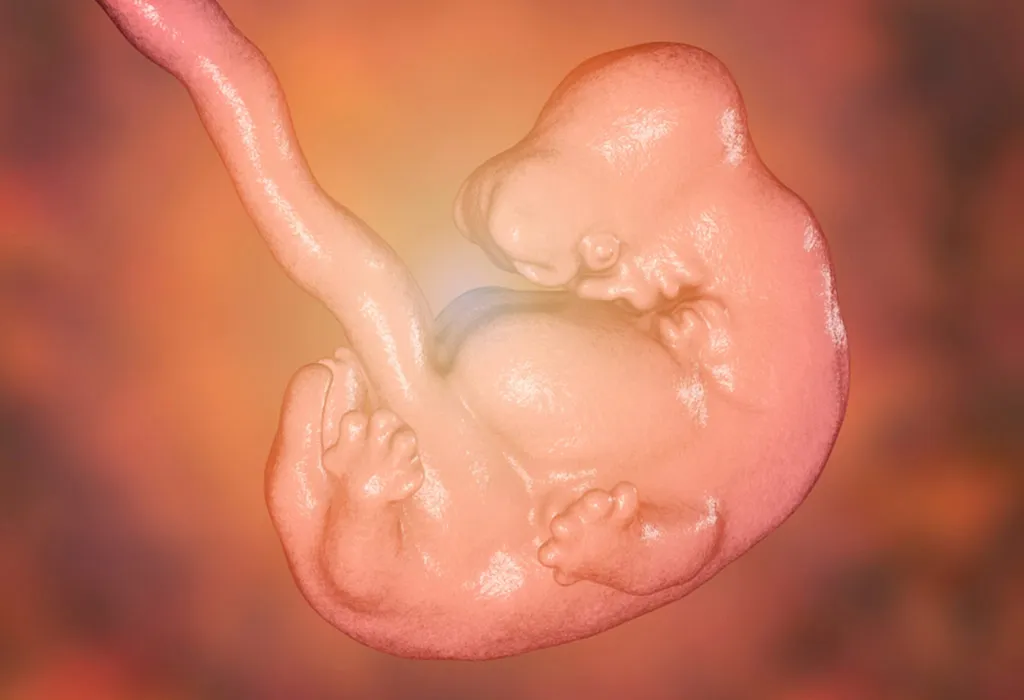
3. Foetal Stage
In the fetal stage of prenatal development, around the completion of 9 weeks of pregnancy, the growth of the embryo finally reaches a stage where it is then referred to as a foetus.
The growth from here on continues right until the delivery of the baby. The body systems continue developing and strengthening within the baby. Neural networks and synapses begin to develop, with brain development at its highest. Gradually, the foetus starts making movements using its limbs.
On the completion of 3 months of pregnancy, the genitals begin to form properly, and by the end, all organs have developed fully. The height and weight of the foetus keep increasing throughout.
As the second trimester of the pregnancy begins, the heart gets stronger, and you can hear the baby’s heartbeat clearly through a monitor. Smaller features such as hair, eyelashes, and nails start appearing on the baby. In this trimester, the growth of the foetus is rather exponential, and becomes nearly six times larger than before.
Throughout this period, the development of the brain takes place rapidly, and the nervous system begins to respond to the growth of the foetus. At 28 weeks of pregnancy, the brain activity resembles that of a sleeping baby. Following this until birth, the baby keeps growing, and the lungs start to expand and contract, preparing the body to breathe after birth (4).
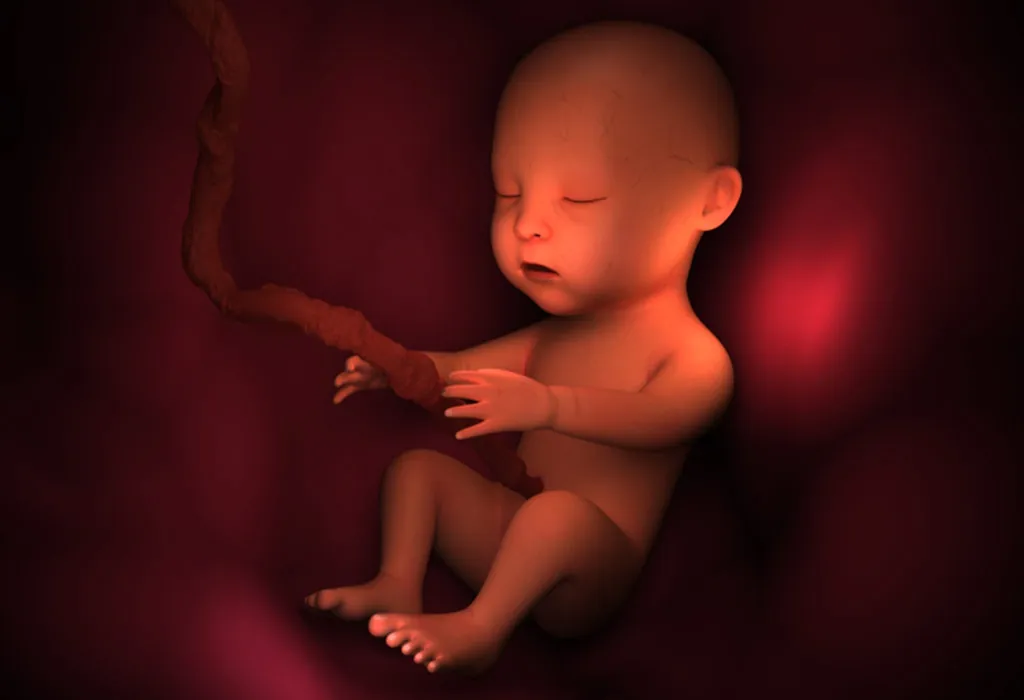
Prenatal Development Stages Chart
Common Problems During Prenatal Development
The foetal period of prenatal development is of intense growth, and hence, is very sensitive to certain conditions. There are the general problems one might observe during this prenatal growth stage:
1. Genetic Problems
As the baby grows, there are chances of some abnormal formations or development issues taking place in the physical aspects of the child, and across multiple organs. It could be due to a genetic mutation, gene damage, or an abnormality of chromosomes. This could descend primarily from the parents. However, certain cases have shown that these could arise by themselves during the prenatal stage.
These abnormalities can range from being dismissively minor to fatal. The chances of miscarriage at this stage are roughly 10-15%, mostly caused by these abnormalities.
The age of the mother plays a pivotal role in these situations. Younger mothers tend to have healthier kids. For mothers over 35 to 40 years of age, their babies are highly susceptible to Down’s syndrome and other pregnancy-related complications.
The presence of any illnesses or diseases in the mother is also a factor that can hamper prenatal development. An HIV positive mother can pass the virus to her child. Other viruses such as rubella result in the baby having a defective heart or being born deaf.
Throughout pregnancy, it is essential for the mother to keep a balanced and nutritious diet that contains all the vitamins and minerals that are needed for good health and growth. Certain supplements for folic acid, calcium, iron, and zinc among other nutrients are recommended, to keep their proportions in the body adequate for the mother as well as the baby. Deficiencies of these nutrients can result in incomplete growth of the foetus or even defects in the neural tube, resulting in an improperly developed brain. Furthermore, the mother should avoid exposure to substances like alcohol, illegal drugs, or any medication that can directly affect the foetus and lead to multiple malformations.
2. Premature Birth
In many cases, a baby might be born prematurely, failing to complete the entire cycle of growth through 40 weeks of pregnancy. Due to advances in medical sciences, most premature babies can stay alive and catch up with their development after birth, too. The survival rate of a baby is higher when based on a larger time spent inside the womb.
| Duration (in weeks) | Survival Rate (in percentage) |
| Less than 21 | 0 |
| 21 – 22 | 0 – 10 |
| 22 – 23 | 10 – 35 |
| 23 – 24 | 40 – 70 |
| 24 – 25 | 50 – 80 |
| 25 – 26 | 80 – 90 |
| 26 – 27 and more | More than 90 |
Risks During the Prenatal Period
Here are some of the risks in the prenatal period that need attention:
- Malnutrition: Nutrition and a balanced diet are of prime importance in the prenatal period, since it is the time of optimum growth of the baby. Any reduction in the nutrition of the mother affects the foetus as well. It can lead to the formation of a foetus that is small in size, which also affects the development of various body organs, the immune system, and the nervous system.
- Pollutants: Exposure to various environmental pollutants can lead to problems for the foetus. Certain pesticides or aerosols contain chemicals that harm the natural growth of the infant.
- Marijuana: Marijuana can be used for therapeutic purposes as recommended by a doctor or for recreational purposes. Marijuana, however, stays inside the fat cells of the body after consumption for approximately a month. If it is still present during conception or is consumed in the initial stages of prenatal development, it can affect the growth cycle of the baby.
- Alcohol: All mothers are strongly advised to stop drinking alcohol prior to conception. During pregnancy, consumption of any kind of alcohol is highly forbidden. If a mother consumes alcohol while being pregnant, it can result in foetal alcohol syndrome. This is an array of birth-related complications and defects in the baby. The infant could end up being developmentally challenged and have extremely low body weight. Their facial features can be ill-formed, such as having a flat nose, extremely wide eyes, no philtrum present on the upper lip, or extremely thin lips.
- Cocaine: Cocaine, in general, is quite a potent drug, and has long-term effects on the body that can be quite harmful. If a mother is exposed to cocaine, or chooses to consume it, the infant can result in having extreme behavioural problems. The baby can be hyperactive, oversensitive to external environments, or even anybody holding them. The baby may also be developmentally challenged.
- Tobacco: All women are strongly advised to stay away from smoking as well as exposure to second-hand smoke while they are pregnant. Mothers who continue smoking face a high risk of pregnancy issues and miscarriage. There can be further birth complications in the child.
- Amphetamines and Tranquillisers: These drugs can cause long-term damage to the foetus, leading to severe developmental disorders or extensive complications during birth.
The prenatal stage is critical for a foetus. The majority of physical and psychological development takes place during this stage, preparing the child to live by himself once he is born and out into the world. When any problems or issues occur, it is important to understand the reason behind its occurrence, and what actions can be taken. However, preventive measures are always better than actions to counter problems after they have taken place.
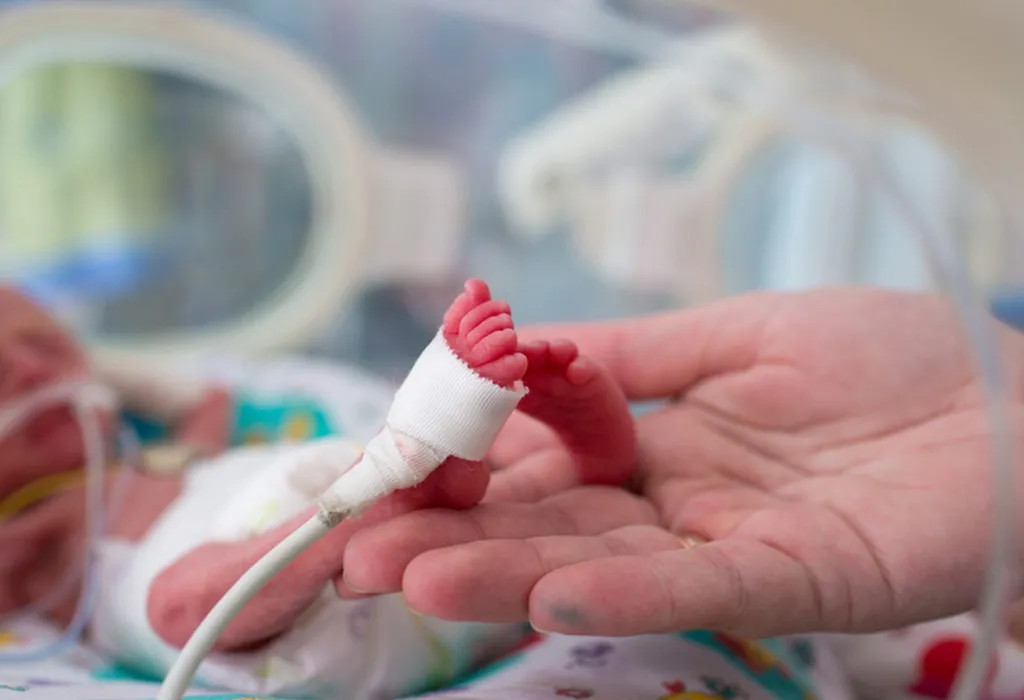
FAQs
1. How does the fetus breathe in the womb without lungs?
The fetus relies on the placenta, not lungs, for oxygen (5). Maternal blood delivers oxygen through the umbilical cord, while fetal hemoglobin (a specialized form in babies) binds oxygen more efficiently than adult hemoglobin. The fetus practices “breathing” by inhaling/exhaling amniotic fluid, which stimulates lung development but doesn’t provide oxygen.
2. Why do some fetuses develop temporary “hairy” skin (lanugo) only to shed it later?
Lanugo, a fine hair covering the fetus by week 18, regulates body temperature in the amniotic fluid. It also helps hold vernix caseosa (a waxy coating) on the skin, which protects against infections and fluid exposure (6). Most fetuses shed lanugo by week 32, but premature babies may retain it briefly after birth.
3. Can a fetus detect and react to spicy food eaten by the mother?
Yes—flavors like garlic or chili enter amniotic fluid via the mother’s bloodstream, and fetuses show changed swallowing patterns (measured via ultrasound) when exposed to strong tastes. By the 3rd trimester, they may even develop preferences.
Even after birth, the infant continues to develop and grow, and it is important that they are not exposed to any harmful factors even then. Brain development is still taking place, and it is important for it to continue unabated without any issues, to have a child that is strong, independent, and healthy.
References/Resources:
1. Cleveland Clinic – Fetal Development
3. Mayo Clinic – Fetal development: The first trimester
4. PB Pressbooks – Periods of prenatal development
5. National Library of Medicine – Fetal breathing movements and changes at birth
6. National Library of Medicine – Embryology, Lanugo
Also Read:
How to Increase Fetal Weight in Pregnancy?
Baby Growth during Pregnancy in Each Trimester
Symptoms of a Healthy Baby During Pregnancy?
Foetal Growth Chart Week by Week – Length & Weight
Baby Size — Week by Week Comparison with Fruits and Veggies
Was This Article Helpful?
Parenting is a huge responsibility, for you as a caregiver, but also for us as a parenting content platform. We understand that and take our responsibility of creating credible content seriously. FirstCry Parenting articles are written and published only after extensive research using factually sound references to deliver quality content that is accurate, validated by experts, and completely reliable. To understand how we go about creating content that is credible, read our editorial policy here.







